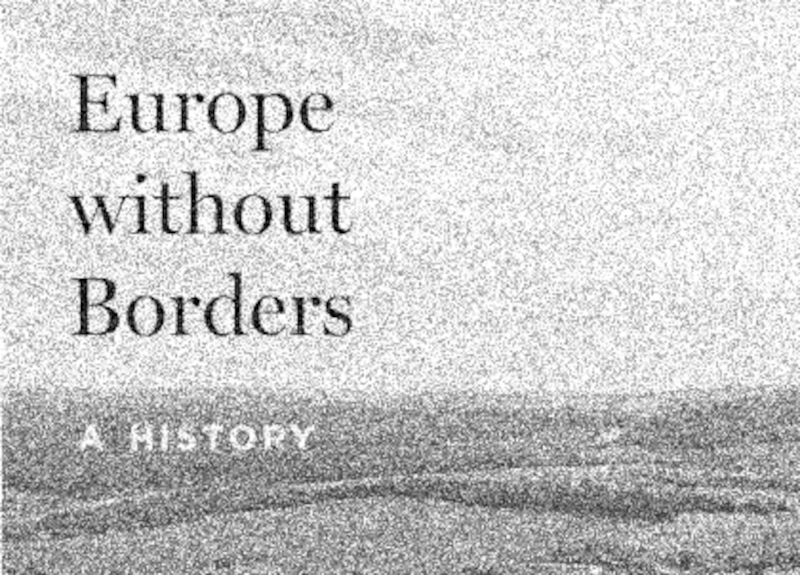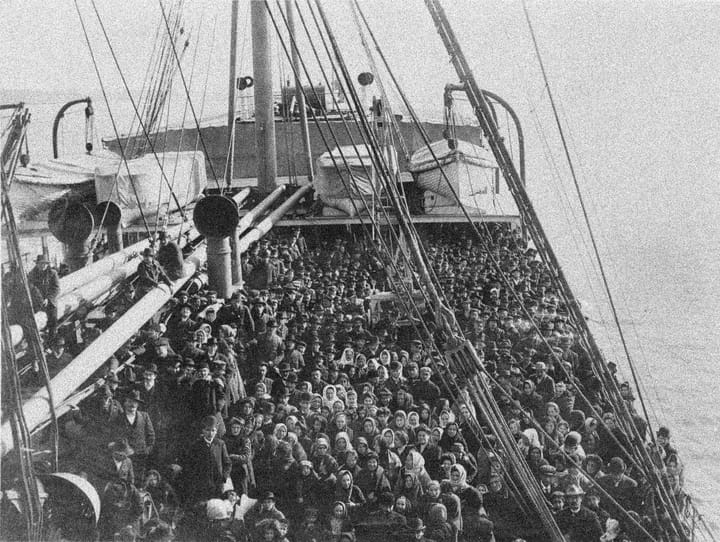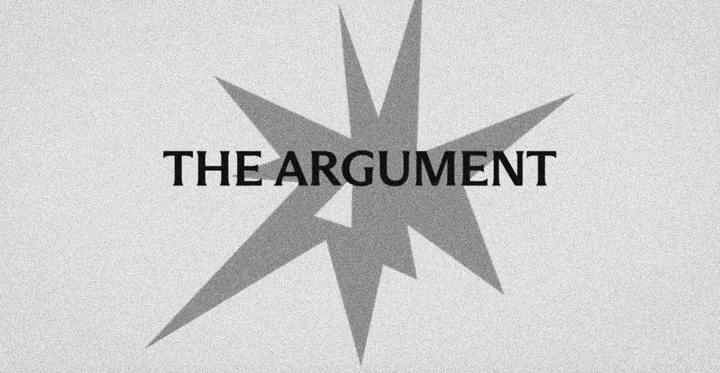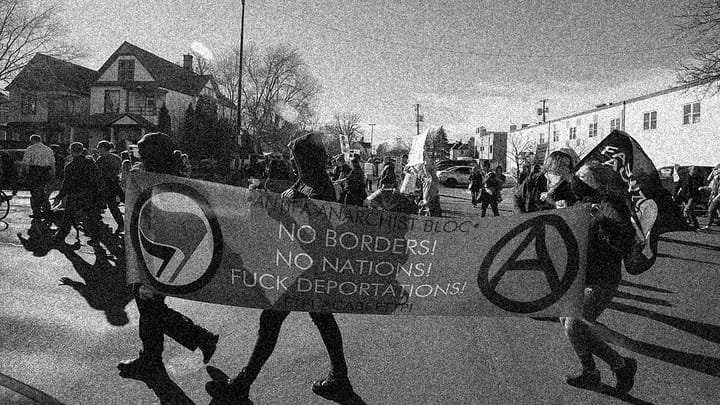Something is rotten in the state of Schengen
The Schengen Treaty of 1985 promised to create a Europe without borders. But free movement for Europeans came at the expense of everyone else.

Review of Isaac Stanley-Becker, Europe without Borders: A History (Princeton: Princeton University Press: 2025)
On June 28, 1996, some 300 illegal migrants from West Africa sought refuge inside the Saint-Bernard de la Chapelle church in Paris, France, where they would stay for more than two months.
They were afraid, and for good reason. As many French citizens celebrated the long-awaited implementation of the so-called Schengen Treaty, a 1985 agreement in which the countries of France, Germany, Belgium, Luxembourg, and the Netherlands swore to wind down border controls, guaranteeing the unobstructed, transnational movement of its residents, the sans-papiers—as the migrants inside the Chapelle took to calling themselves—faced off against police officers and government agents demanding their immediate and unconditional removal. They were to be deported not only from France, but from the entire Schengen area that it was now part of.
Although they were undocumented, the sans-papiers were no strangers to French culture or history. Most of them had been living and working in the country for years, if not decades. They were born in former French colonies, spoke French, and had provided their new movement with a name deliberately echoing the sans-culottes: those breechless, penniless Parisian workers from the 18th century who, feeling left behind by the liberal noble and bourgeois reformers of the French Revolution, briefly and in the end unsuccessfully took the country’s fate into their own hands.
The struggles of the sans-papiers—which persist to this day, encompassing illegal migrant communities throughout Europe—highlight an irreconcilable contradiction at the heart of Schengen, a treaty otherwise hailed as a shining example of European democracy and cosmopolitanism: that opening up Europe internally ultimately went hand in hand with external fortification, and that improving the freedom of mobility for Europeans came at the cost of further limiting the mobility of non-Europeans, like those holed up inside the Chapelle.
The origins, evolution, and implications of this contradiction are on full display in Washington Post reporter Isaac Stanley-Becker’s new book Europe without Borders: A History, published by Princeton University Press in January 2025. Based on archival material from Brussels that, in strangely Soviet fashion, did not become publicly available until recently, Europe without Borders exposes the hitherto secretive thought processes and reservations of the policymakers that turned Schengen from a distant dream into an inevitable, but by no means ideal, reality. What began as a utopian plan to counter the evils that led to the Second World War—nationalism, xenophobia, and economic isolation—gradually fell victim to growing demands to counter openness with improved surveillance and discriminatory profiling of travelers from “undesirable” second and third world countries, including many of Europe’s former colonies.
Stanley-Becker’s story—the story of the European Project—is one of one step forward, two steps back. It’s also a story which, though steeped in decades and at times centuries-old legal documents and transcripts, played an integral role in shaping the world we live in today, where far-right parties, using language and espousing ideals similar to that of the old, war-torn Europe which Schengen’s most hopeful architects wished to erase, are rapidly returning to power.
In order for the Schengen Treaty to go into effect, policymakers had to address center and center-right concerns about national and international security. This they did, Stanley-Becker writes, by narrowly defining the agreement’s beneficiaries as “nationals,” and by making explicit that the free movement of those nationals depended “on the exclusion of ‘aliens,’ on blocking their border crossing” into Schengen’s expansive frontier. Member states, divided against themselves, ratified the treaty under the condition that they retain the right to reinstate their own borders in case of emergency, toughen and streamline visa application guidelines, and enable law enforcement to pursue unwanted newcomers both inside and outside their traditional areas of jurisdiction. European border controls, Stanley-Becker explains, weren’t dismantled so much as they were replaced by a new, stricter system—one that relied less on physical inspections and more on remote, covert surveillance. Writing for Le Monde in May 1989, Yves Jouffa, then-president of France’s human rights league, criticized what he saw as the “spatial extension” of police powers, which would render “the control of justice more difficult.”
Central to the treaty, but mostly unknown to the general public, was a list of more than 100 countries whose nationals were classified as “undesirable,” including Haiti, Yemen, and China, but also Poland and East Germany. Migrants from these countries would be flagged for additional inspection should they find their way into the European heartland. “Schengen,” writes Stanley-Becker, “was at once cosmopolitan and circumscribed by distinctions of nationality.”
Giving into security concerns didn’t placate the Right. Instead, it only bolstered anti-immigrant and anti-EU sentiment. The sans-papiers occupation of the Chapelle in Paris, soon to be followed by another church occupation involving migrants from Mali, Mauritania, Ivory Coast, Senegal, and Guinea, was itself a response to a series of laws that lowered deportation requirements, ended birthright citizenship, turned the act of harboring immigrants into a criminal offense, complicated the appeals processes for immigration courts, and made it more difficult for migrants to obtain legal status. “France has been a country of immigration,” Charles Pasqua, France’s former minister of the interior (to whom many of the aforementioned laws are tied), said in 1993, when the late Jean-Marie Le Pen was gaining ground in the country. “It doesn’t want to be one anymore.”
Discussions about the substance and sanctity of the Schengen Treaty continue into 2025, with global pandemics, threats of crime and acts of terrorism, far-right electoral victories, and various immigration crises—from the seemingly concluded Syrian Civil War to Russia’s ongoing invasion of Ukraine—testing Europe’s commitment to open borders and, more importantly still, further exposing the contradictions baked into that commitment.
“Toward the end of the book,” Stanley-Becker told me via email when asked about the extent to which Schengen should be held accountable for shaping Europe’s contemporary political landscape,
I quote a comment made to me by Robert Goebbels, a Schengen negotiator from Luxembourg. He argued that Schengen is not responsible for all of Europe’s present ills. Schengen has become a symbol of sorts for the ills of globalization, and for concerns about unchecked immigration. And it’s certainly a target of far-right parties. And yet not just far-right parties. Renewed border checks have been instituted by centrist governments in Europe, including right at Europe's heart, in Germany. What’s more, some of the same forces are buffeting democracies in other parts of the West, including the United States, so these forces are larger than Schengen. But Schengen, formed in the twilight of the Cold War, embodied a particular mindset, an embrace of liberal internationalism, and its founders envisioned it as a laboratory for these ideals. These ideals are in serious doubt in Europe and beyond, so yes, Schengen is central to the continent’s multiple overlapping crises.
Even though longtime members like Germany are reinstating domestic border controls, and newcomers like Romania and Bulgaria—which have waited to join the Schengen zone ever since they were incorporated into the EU—are responding with a begrudged “It was about time” rather than a jovial “We’ve finally got it” (to quote Poland’s Centre for Eastern Studies researcher Kamil Calus), Stanley-Becker does not expect Schengen to disintegrate overnight, noting “the ability to traverse internal Europe borders to travel, work, shop, and visit family remains popular among citizens of EU member states.” More likely,” he says, is “the death of Schengen by a thousand cuts,” with members manipulating the treaty’s guarantee of national sovereignty to rebuild their borders bit by bit.
While the future of Schengen remains up for debate, European policies on migration that have arisen since the treaty went into effect leave a lot less room for ambiguity. Comments like “We cannot accommodate all the misery in the world,” uttered by French Prime Minister Michel Rocard in the late 1980s, or even “Do we want more or fewer Moroccans?” asked by Dutch politician Geert Wilders in 2016, show the European leadership’s continued unwillingness to assume responsibility for problems their own states have caused, whether through prewar colonization or postwar exploitation of migrant workers from those colonies.
“We did not come to France by chance,” Ababacar Diop, a sans-papier organizer, reminded readers in his 1997 memoirs, Dans la peau d’un sans-papier. “Our countries have suffered and continue to suffer from colonization.” Put differently, Schengen was never truly borderless.
■
Tim Brinkhof is a Dutch journalist and researcher based in the US. He studied European history at New York University and has written for Jacobin, New Lines Magazine, Big Think, Freethink, JSTOR Daily and more.



